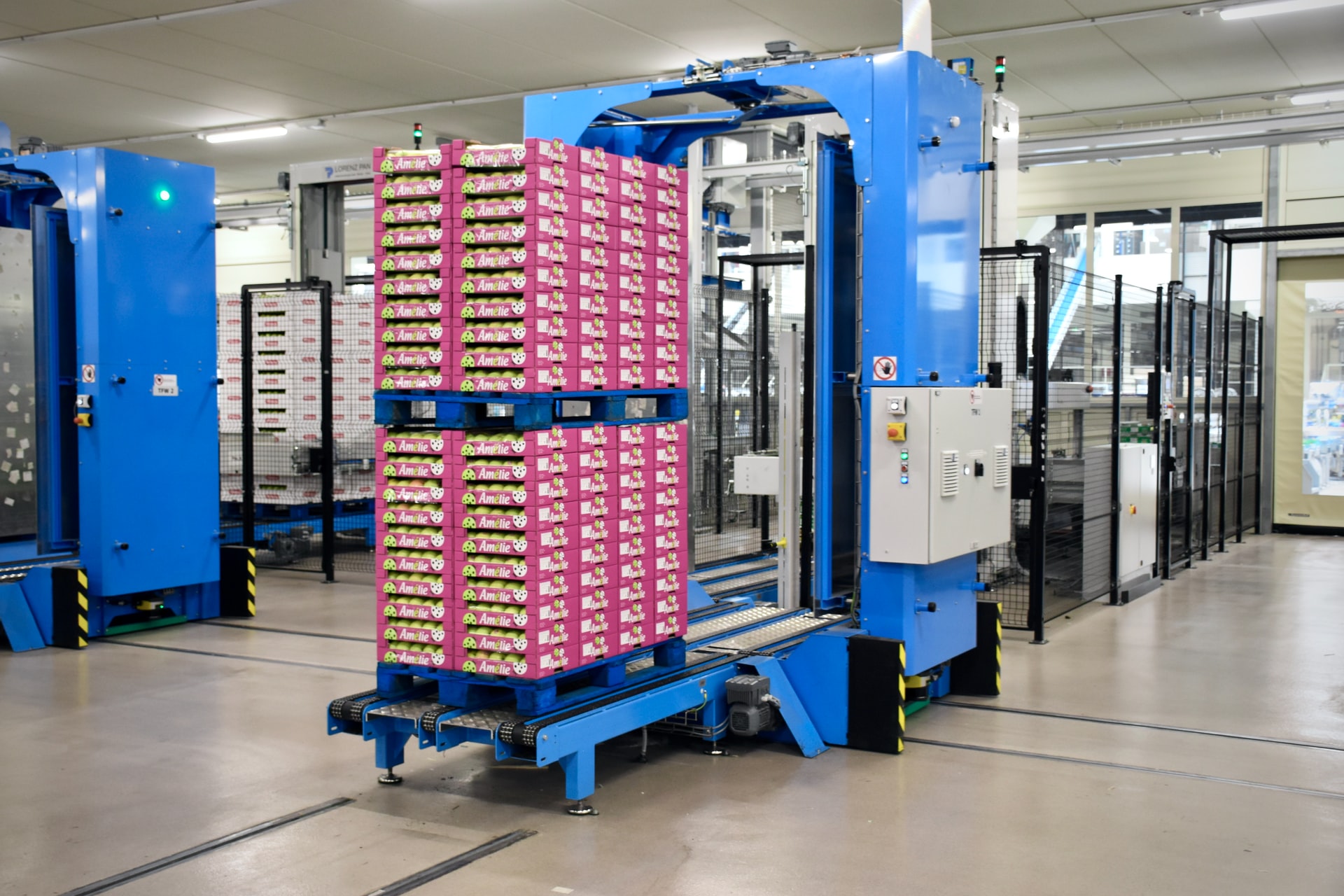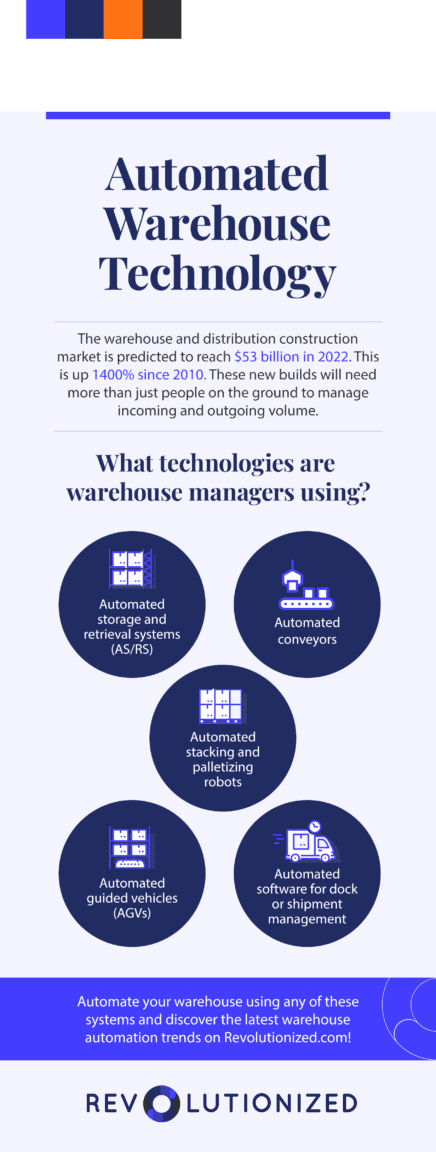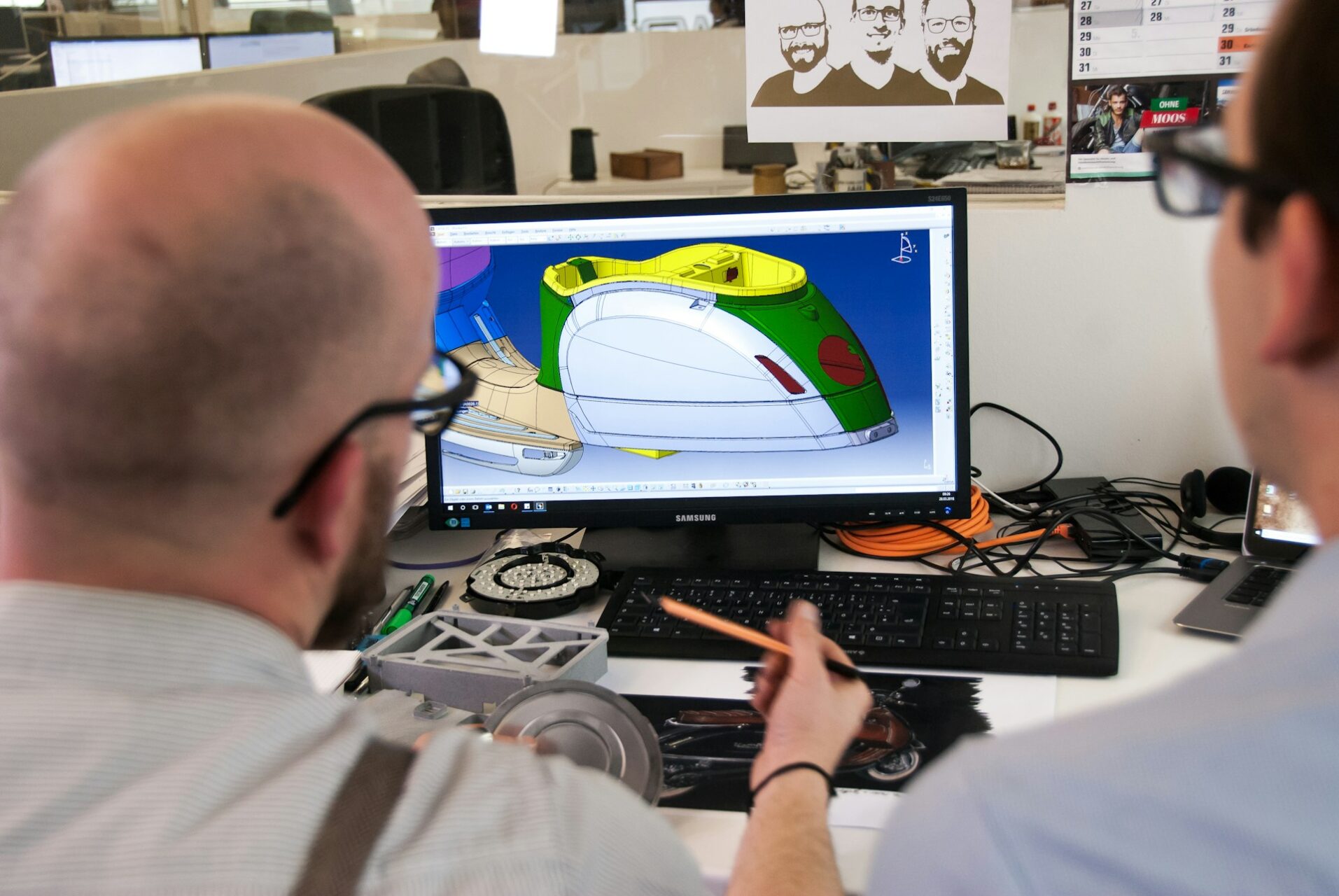
What Is Automated Warehouse Picking?
September 16, 2022 - Emily Newton
Revolutionized is reader-supported. When you buy through links on our site, we may earn an affiliate commision. Learn more here.
People who study the warehousing and logistics industries have noticed unprecedented demand lately. Any available warehouse vacancies are quickly snatched up by growing or new e-commerce and retail tenants. This has led to shortfalls in supply as construction crews hurriedly break ground on new warehouses and fulfillment centers.
Some cities have seen their local demand for commercial warehouse spaces skyrocket by more than 60%.
Coinciding with the rapidly expanding warehouse industry is the rise of the warehouse automation sector. Picking orders in warehouses is a major step between customers placing an order and that order arriving in their mailbox. Automating the order-picking process is a major opportunity as well as a challenge for warehousing and e-commerce companies. But technology is finally catching up to that challenge.
Here’s a look at automated warehouse picking, how it fits into fulfillment and how technology supports the dream of fully automated warehouses.
Why Is Automated Warehouse Picking Trending?
Even as companies seek to fill existing and new fulfillment centers with ready-to-ship goods, external factors are conspiring to hamstring the labor supply.
Widespread calls for higher wages and better working conditions mean many supply chain companies can’t keep their facilities staffed. Issues from the ongoing war in Ukraine and the lingering COVID-19 pandemic may worsen the issue. Even when these companies find available, appropriately functional spaces, they may not have enough staff to operate efficiently.
Warehouse automation, including automated order picking, helps overcome these challenges. With the right automation approach, businesses can keep customers across the globe satisfied with on-time orders.
Now that the underlying technologies powering automated — even “lights-out” — warehouses are maturing, the market for these solutions is expanding extremely quickly. One report suggests this sector will more than double to almost $70 billion in 2025.

Examples of Automated Warehouse Technologies
What are some examples of technologies used to automate common warehouse activities? Here is a selection:
- Automated storage and retrieval systems (AS/RS)
- Automated conveyors
- Automated stacking and palletizing robots
- Automated guided vehicles (AGVs)
- Automated software for dock or shipment management
Order picking has so far been one of the more difficult warehousing and fulfillment-related tasks to automate because in some cases it relies on keen perception that technology wasn’t, until recently, able to provide. Today, it’s entirely possible to automate order picking using technology using robotic-vision technology, smart pathfinding, image recognition, and others.
But first:
What Is Order Picking in Warehouses?
A brief definition of order picking is that it’s the act of collecting merchandise from a warehouse floor and delivering it to the packing and shipment area of the facility. It sounds straightforward, but there are lots of steps involved in the process.
Here’s a truncated rundown of what’s involved in the order-picking process within warehouses, beginning with a consumer interacting with an e-commerce website.
- A customer places an order on a website for a product located in one of a company’s warehouses.
- Somebody at the company identifies the facility and stow location for the required item. More often, software handles this (more below).
- Another individual — the order picker — travels through the warehouse to the stow location to retrieve the item. They scan the item, and the bin location to confirm, and place the item in a tote.
- The order picker walks the warehouse again to deliver the picking tote to a re-bin location (if the item is part of a multi-SKU order) or the packing location if it’s a single-item order.
- The item is scanned a final time, packed for shipment, and sent to the dock or outbound freight area.
There are several steps in this process where automation can reduce the required human time and effort. It can also come close to eliminating the prospect of fulfillment errors. This concept involves the use of both software and hardware automation.
How to Automate Warehouse Picking With Software and Hardware
Warehouses have manifold software and hardware vendors to choose from today when it comes to software and hardware automation solutions. Developing the right automation plan starts with understanding the current needs and pain points at the facility in question, and then finding a vendor that provides a value-adding solution.
Today, warehouses struggle with a range of challenges in need of solutions, including:
- Broad and diversifying product inventories
- Rapid changeover for order pickers and other key staff members
- Extremely fast expected turnover times for new orders
- Large and increasingly SKU-crowded warehouses becoming difficult to navigate
Automation provides a solution to all of these challenges, through five broad categories of technological integration.
1. Creating Picking Stations
One of the tasks that robots and automated conveyors excel at is creating front-of-warehouse picking stations. This is where automated mechanisms retrieve the required merchandise from the back of the warehouse — in bulk and case-pack storage areas — and bring the needed quantity forward in the warehouse, where humans or robots can retrieve them more easily.
2. Picking From Pallets
It’s common for warehouses to pick directly from pallets at times of high demand or when they’ve prepared annexed areas to hold high-consumption goods temporarily. This type of robotic picking involves automated picking shuttles that retrieve goods from the front or top of pallets.
3. Individual Order Picking and Re-Binning
It’s becoming more common to see warehouse robots conduct general order picking from small-SKU product libraries and case packs, combine them for shipment, and then automatically shuttle them to the shipping area. Robots designed for these tasks usually have manipulator arms that operate on multiple axes for maximum reach and flexibility, with cushioned grippers at the end.
4. Cobots
Some of the automated warehouse picking solutions above rely on robots or shuttles operating on tracks or monorails. Other automated picking robots are more mobile and maneuverable, and they may accompany and complement human warehouse workers instead of replacing them outright.
Some collaborative robots — “cobots” — travel with human order pickers and provide aisle and bin navigation along with pacing guidance. Even if they don’t manipulate the products directly, these robots facilitate faster and more error-free picking.
5. Automated Software
Automated software, sometimes called software robots, are the keystone in this tapestry of automated and robotic technologies. Whereas human beings used to facilitate the flow of information from the e-commerce channel, like a storefront, to the warehousing team, most of this is handled automatically now by software robots.
Modern enterprise-planning and warehouse-management software suites automatically find product stow locations and can assign pick paths — to humans or robots — extremely efficiently. Whether or not a robotic picker physically moves SKUs from place to place, it’s robotic software behind the scenes making the best match when customers hit the buy button.
Which fulfillment center is closest to the customer? Do they have the required item in stock? Does the product need to be combined with other items before final shipment?
Making the best judgment calls for every order, with many orders simultaneously, isn’t possible any longer for most medium-sized and larger warehousing operations. It takes smart software to allocate inventory strategically, create time-efficient picking paths, and intelligently navigate to stow locations to match customers with their ordered merchandise.
Software and Hardware Are Automating Warehouse Picking
Automation technologies have much to offer this and many other industries. Today, grappling with the rising costs of labor, expanding populations and product demands, and supply-chain disruptions requires smart investments in technology.
Order picking is a great place to start for warehousing operations that have struggled with errors or inefficiency. Automated technology doesn’t have to replace human talent — but it can displace it to do higher-paying and more rewarding work elsewhere in the organization.
Editor’s Note: This article originally published on August 23, 2022 and was updated on September 16, 2022 to include a related infographic.
Revolutionized is reader-supported. When you buy through links on our site, we may earn an affiliate commision. Learn more here.
Author
Emily Newton
Emily Newton is a technology and industrial journalist and the Editor in Chief of Revolutionized. She manages the sites publishing schedule, SEO optimization and content strategy. Emily enjoys writing and researching articles about how technology is changing every industry. When she isn't working, Emily enjoys playing video games or curling up with a good book.




